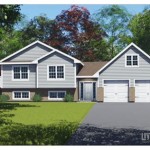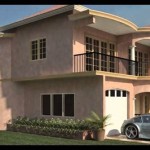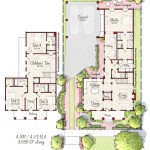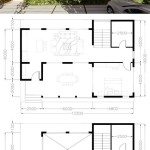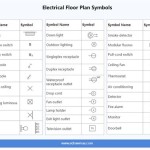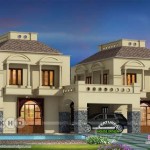Simple House Plans With Outdoor Living Area
The concept of integrating indoor and outdoor living spaces has gained significant traction in modern residential design. Simple house plans incorporating outdoor living areas cater to a desire for a seamless transition between the comfort of the indoors and the relaxation offered by the natural environment. These plans typically prioritize functionality, affordability, and ease of construction while maximizing the usable living space by extending it beyond the traditional walls of the house.
Designing a simple house plan with an outdoor living area requires careful consideration of several factors, including climate, lot size, orientation, and desired lifestyle. The goal is to create an aesthetically pleasing and functionally effective space that complements the overall design of the house and enhances the occupants' quality of life. This often involves strategically positioning outdoor areas to take advantage of natural light, prevailing breezes, and scenic views, while also ensuring privacy and protection from the elements.
One key element in successful integration is the seamless transition achieved through the use of large windows, sliding glass doors, or even retractable walls that effectively dissolve the boundary between indoors and outdoors. This visual and physical connection creates a sense of spaciousness and allows for easy flow between the two areas. The choice of materials and finishes also plays a crucial role in creating a cohesive design, with many homeowners opting for natural materials such as wood, stone, and brick to further blur the lines between the built environment and the natural landscape.
Key Point 1: Design Considerations for Simple House Plans With Outdoor Living Areas
Several critical design considerations must be addressed when developing simple house plans with outdoor living areas. These considerations encompass spatial planning, structural elements, and material selection, all of which contribute to the overall functionality and aesthetic appeal of the design.
Spatial planning involves carefully arranging the interior spaces of the house to optimize their relationship with the intended outdoor living area. Typically, the kitchen, dining room, and living room are positioned to provide direct access to the outdoor space, facilitating easy entertaining and everyday living. The size and shape of the outdoor area should also be proportional to the size of the house and the lot, ensuring a balanced and harmonious design.
Structural elements play a vital role in defining and supporting the outdoor living area. A covered patio or porch can provide protection from the sun and rain, extending the usability of the space throughout the year. Pergolas, trellises, and awnings can also be used to create shaded areas and add architectural interest. The structural elements should be designed to integrate seamlessly with the existing architecture of the house, creating a unified and cohesive aesthetic.
Material selection is another crucial aspect of the design process. Durable and weather-resistant materials should be used for the decking, flooring, and furniture in the outdoor living area. Natural materials such as wood, stone, and brick are often preferred for their aesthetic appeal and ability to blend in with the natural environment. However, synthetic materials such as composite decking and recycled plastics can also be excellent choices, offering superior durability and low maintenance requirements. The color palette should be chosen to complement the colors of the house and the surrounding landscape, creating a visually appealing and harmonious space.
Orientation is a vital factor. In warmer climates, placing outdoor living areas on the north or east side of the house can minimize exposure to the intense afternoon sun. In cooler climates, a south-facing orientation can maximize solar gain and create a warmer, more inviting outdoor space. Considering prevailing winds is also important, as strategically placed windbreaks can help to protect the outdoor area from strong gusts.
Privacy considerations are also paramount. Fences, walls, hedges, and strategically placed landscaping can help to create a sense of privacy and seclusion in the outdoor living area. The height and density of these elements should be carefully considered to balance privacy with the need for natural light and ventilation.
Key Point 2: Maximizing Functionality and Usability
The goal of designing an outdoor living area is to create a space that is both functional and enjoyable to use. This requires careful consideration of the intended activities and the needs of the occupants. Several strategies can be employed to maximize the functionality and usability of the outdoor space.
Defining distinct zones within the outdoor living area can help to create a more versatile and functional space. For example, a dining area with a table and chairs can be separated from a lounge area with comfortable seating. A cooking area with a grill and countertop can be designated for food preparation. Defining these zones allows the space to be used for a variety of activities, from dining and entertaining to relaxing and gardening.
Providing adequate lighting is essential for maximizing the usability of the outdoor living area, especially during the evening hours. Ambient lighting can be provided by string lights, lanterns, or recessed lighting. Task lighting can be used to illuminate specific areas, such as the cooking area or the dining table. Landscape lighting can be used to highlight architectural features and create a visually appealing ambiance.
Incorporating comfortable and functional furniture is crucial for creating an inviting and enjoyable outdoor living area. Weather-resistant furniture made from materials such as teak, aluminum, or wicker is a good choice. The furniture should be sized appropriately for the space and arranged to encourage conversation and relaxation. Cushions and pillows can add comfort and style.
Adding amenities such as a fire pit, outdoor fireplace, or water feature can enhance the enjoyment and usability of the outdoor living area. A fire pit can provide warmth and ambiance on cool evenings, while an outdoor fireplace can create a cozy and inviting focal point. A water feature can add a sense of tranquility and relaxation. These amenities can transform the outdoor living area into a true extension of the home.
Consider storage solutions for outdoor equipment, cushions, and other items. This helps maintain a clutter-free and organized space. Built-in benches with storage compartments or dedicated storage sheds can be utilized. This keeps the outdoor living area visually appealing and functional.
Key Point 3: Cost-Effective Strategies for Creating an Outdoor Living Area
Creating an outdoor living area does not necessarily require a large budget. Several cost-effective strategies can be employed to create a beautiful and functional outdoor space without breaking the bank. These strategies focus on material selection, DIY projects, and smart landscaping.
Choosing affordable materials is one of the easiest ways to save money on an outdoor living area. Instead of expensive hardwood decking, consider using composite decking or pressure-treated lumber. Instead of natural stone, explore concrete pavers or gravel. These materials can be just as durable and aesthetically pleasing as their more expensive counterparts.
Embracing DIY projects can also significantly reduce the cost of creating an outdoor living area. Building a simple pergola, constructing raised garden beds, or creating a DIY fire pit can be relatively easy and inexpensive. Online tutorials and resources can provide step-by-step instructions and inspiration for these projects.
Smart landscaping can be used to create a beautiful and functional outdoor space without spending a fortune on expensive plants and landscaping features. Planting native plants and drought-tolerant species can reduce the need for watering and maintenance. Using mulch to suppress weeds and conserve moisture can also save time and money. Planting trees and shrubs strategically can provide shade and privacy without the need for expensive fences or walls.
Repurposing existing materials can be a great way to save money and add character to the outdoor living area. Old bricks can be used to create a patio or walkway. Pallets can be repurposed into furniture or planters. Salvaged wood can be used to build a pergola or fence. These projects can be both cost-effective and environmentally friendly.
Prioritize essential features over non-essential ones. Focus on creating a comfortable seating area and a functional cooking area before investing in more elaborate features such as a water feature or outdoor fireplace. This allows the homeowner to create a functional and enjoyable space within the budget and add more features later as funds become available.
Incorporating sustainable design principles into the creation of an outdoor living space can lead to long-term cost savings. Using permeable paving materials can reduce stormwater runoff and the need for expensive drainage systems. Harvesting rainwater can provide a free source of water for irrigation. Planting trees and shrubs can help to reduce energy consumption by providing shade and reducing the need for air conditioning.
In conclusion, simple house plans incorporating outdoor living areas offer a desirable blend of indoor comfort and outdoor relaxation. Careful planning, material selection, and a focus on functionality are key to creating a successful and enjoyable outdoor space. By considering the design considerations, maximizing usability, and employing cost-effective strategies, homeowners can create an outdoor living area that enhances their quality of life and adds value to their property.

Modern House Plans With Outdoor Living Houseplans Blog Com

Modern House Plans With Outdoor Living Houseplans Blog Com

Stylish And Simple Inexpensive House Plans To Build Houseplans Blog Com

Stylish And Simple Inexpensive House Plans To Build Houseplans Blog Com
Est House Plans To Build Simple With Style Blog Eplans Com

Modern House Plans With A View To The Rear Blog Dreamhomesource Com
Est House Plans To Build Simple With Style Blog Eplans Com

Trending Ranch Style House Plans With Open Floor Blog Eplans Com

Patio Layout Ideas Landscaping Network

02 House Encourages Luxury Outdoor Living In South Arquitetura Casas Paisagismo


